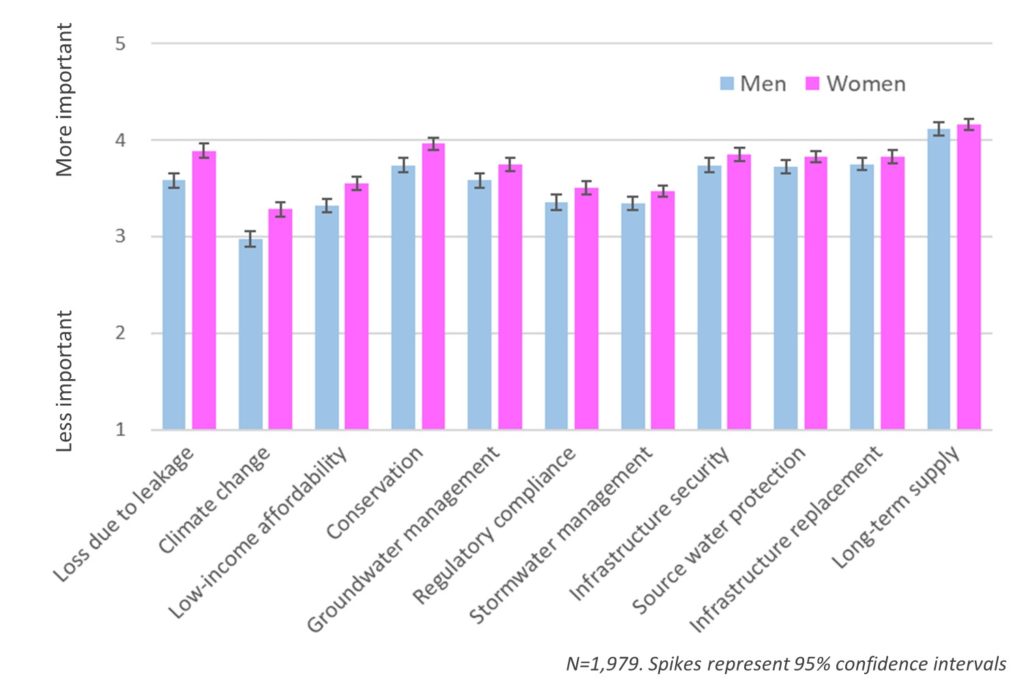Gender predicts concern for water utility issues

Do men and women think differently about their water utilities? In a recent post I wrote about some findings from a Texas A&M Institute for Science, Technology & Public Policy (ISTPP) public opinion survey that included questions taken directly from the American Water Works Association (AWWA) State of the Water Industry survey. The ISTPP survey’s sample of nearly 2,000 individuals was carefully crafted to be representative of the US population, and so is a goldmine of public perceptions about water. I’m blogging about interesting findings here as time allows; today I’m looking at gender.
Water & gender
I’ve always been a bit skeptical about the idea that water is a “gendered” issue in the United States. From a purely biological perspective, there’s no reason to expect that men and women think differently about water utility issues. People of all genders need water to drink, cook, and clean; sanitary sewers and stormwater systems protect everyone. There’s a huge body of academic research on gender related to water and sanitation in the developing world, which make sense—in much of the world, women and girls bear the greatest (literal) burden of securing drinking water, and are most vulnerable to poor sanitary conditions. My Texas A&M colleague Kathleen O’Reilly has worked extensively on this issue.
But in most of the US, men and women experience water utilities in more or less the same way. For the most part, American girls aren’t trudging long distances on foot to fetch water, and American women don’t have to use open pit toilets in urban areas.
What women want (from their water utilities)
So it was surprising (to me, at least) to discover a subtle but consistent gender disparity in attitudes toward water issues in our dataset. As noted in my last post, the ISTPP survey asked eleven questions taken directly from the SOTWI. All eleven attitudinal questions are based on a five-point scale: unimportant (1), slightly important (2), important (3), very important (4), and critically important (5).
Here are the results from the national survey, broken down by gender:

Women reported greater average concern than men across all eleven categories. The greatest disparities were in concern for water loss, climate change, affordability, and conservation. The differences aren’t huge in absolute terms—about a third of a standard deviation in general—but the consistency is striking. The gender effect is in the same direction across-the-board, and the difference is statistically significant in nine of the eleven categories. The gender differences persist in regression analyses that control for partisanship, region, and age.

Unfortunately, the 2015 SOTWI doesn’t include gender data, so we can’t say much about whether a similar gender gap exists within the water sector.
The Aquatic Gender Gap
I don’t know enough social psychology to know exactly what’s behind the gender gap in American water utility attitudes. But these results offer a potentially powerful clue for politically savvy utility leaders: building support for water systems in American communities probably starts with women.

Hello – thanks for sharing these results about US women’s attitudes about water. Are the ISTPP survey results available somewhere? I am looking for resources on US women’s perceptions of water. Thank you.